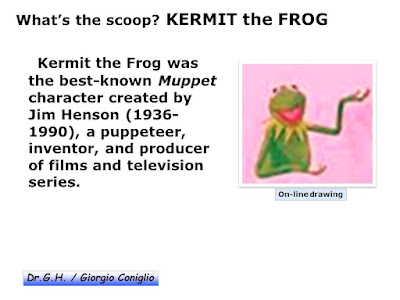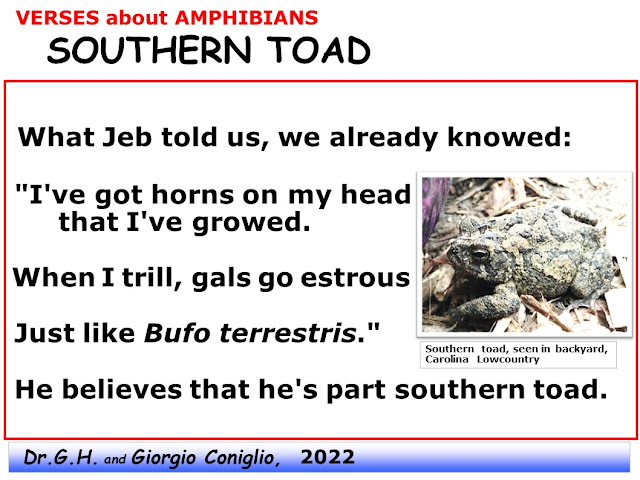Since 2016 Giorgio Coniglio, registered pseudonym and editor-in-chief, has been bundling collections of POETRY, WORDPLAY and PHOTOGRAPHY, seasoned with humour and parody, with the sole aim of entertaining YOU with presentations at the rate of 5 times per month. The related blog "DAILY ILLUSTRATED NONSENSE" sends out items from these collections in somewhat random order one-at-a-time.
Saturday, 25 September 2021
Monday, 20 September 2021
UNPLANNED CANALS: More Magical Palindromes
The current creation represents another spinoff of the recent slew of map-art blogposts by Giorgio Coniglio (registered pseudonym) and Dr. GH.
With all this mental energy focusing backwards and forwards on palindromes, it has been hard to avoid the subject of canals. So, check out the last in the series of map-art collections...
- INTRODUCTORY CONCLUSION: The Tourists' Palindromic Guides,
and these wordplay extravaganzas...
- MAGICAL CANAL VERSES and PALINDROMES: the application of the magical palindrome construct to wordplay of geographic interest.
- MAGICAL PALINDROMES: The specifics of the development of magical palindromes, and an initial listing of examples can be found on this blogpost dating from February 2017, updated in 2020.
- MAGICAL PALINDROMES: The specifics of the development of magical palindromes, and an initial listing of examples can be found on this blogpost dating from February 2017, updated in 2020.
DIRECTION FOR WEB-TRAVELLERS: (updated June 2024)
To resume daily titillations on our related blog "Daily Illustrated Nonsense", click HERE. Once you arrive, you can select your time frame of interest from the calendar-based listings in the righthand margin, and check the daily offerings for any month in the years 2020 to the present. (As of June 2024, there are over 1500 unique entries available on the Daily blog, and most of these are also presented here on "Edifying Nonsense" in topic-based collections.) The "Daily" format has the advantage of including Giorgio's photo-collages, song-lyrics and other material that are not shown here on this topic-based blog.
Wednesday, 15 September 2021
A Frog-Bog-Blog: Verses about AMPHIBIANS
SATIRE COMPOSED: Giorgio Coniglio (registered pseudonym) and Dr. GH, September 2018. Today's poems have mostly been published at OEDILF.com, an online humor dictionary that has accumulated 120,000 carefully edited limericks.
PHOTOS: Unless otherwise noted (by pale blue acknowledgment plaques), embedded photographs were taken with and transferred from Giorgio's cellphone. Following submission of the poems to OEDILF, the slides collages we present here were formatted using Powerpoint software on a vintage 2000-era PC computer. No photographic subjects were reimbursed for participating in this undertaking, and OEDILF has no involvement in the pictorial portion of this presentation.
By the way, to find more verses, or any other search target on either of these 2 blogs, use the SEARCH-FUNCTION found at the top of the right-hand margin.
CURRENT CONTENTS:
American green tree frog
American green tree frog
American toad
Anurans
Bufotoxin
Dominican "crapaud"
Giorgio's froglegs
Kermit the frog
Southern (horny) toad
Authors' Note: In the Canadian province of Ontario we have only two species of toad, apparently -- the American toad, Anaxyrus americanus, and the closely related Fowler's toad. There are also some 10 species of 'true' frog.
The author had initially given excessive credence to the differentiating rule that states, "if something hops, it's a toad, but if it leaps, it's a frog." The creature in question was apparently under great pressure to reach the Great Lakes beach.
Authors' Note: crapaud (KRA-poh, Caribbean pronunciation), derived from the
French word for ‘toad’ (kra-POH).
At one time widely distributed in the eastern Caribbean, the large edible frog, Leptodactylus fallax, is now found only on parts of the islands of Montserrat and Dominica. Hunted extensively for its meaty froglegs, once the national delicacy of Dominica, this defenceless animal has been known by many different and colorful names, reflecting the English, Dominican Creole French, and patois spoken by local residents. Although hunting has been banned on Dominica since the 1990s, the crapaud remains on the list of severely endangered species.
Learn more about Leptodactylus fallax at Wikipedia here.
Read more about the disastrous global effects of consumption of frogs as human food here.
DIRECTION FOR WEB-TRAVELLERS:
To resume daily titillations on our blog 'Daily Illustrated Nonsense', click HERE. Once you arrive, you can select your time frame of interest from the calendar-based listings in the righthand margin, and check the daily offerings for any month in the years 2020 to the present. (As of September 2022, there are 1000 entries available on the Daily blog, and most of these are also presented here on 'Edifying Nonsense' in topic-based collections.)
Friday, 10 September 2021
Wordplay Maps: CHEMICAL STATES and PROVINCES
\
DIRECTION FOR WEB-TRAVELLERS:
To resume daily titillations on our blog 'Daily Illustrated Nonsense', click HERE. Once you arrive, you can select your time frame of interest from the calendar-based listings in the righthand margin, and check the daily offerings for any month in the years 2020 to the present. (As of September 2022, there are 1000 entries available on the Daily blog, and most of these are also presented here on 'Edifying Nonsense' in topic-based collections.)
Sunday, 5 September 2021
ITALIAN LOANWORDS
CURRENT CONTENTS:
Ciao
Ciao
Cicerone
Fiasco
Ghetto
Oratorio
Vendetta
Italian Treats (3 verses, a 'brief saga')
Food intolerance (3 verses, a 'brief saga')
Authors' Note: You can probably figure out how to pronounce the word 'ciao' if you already know how to say ...
cello: the musical instrument, and
Fauci: the well-known director of the American CDC (Centers for Disease Control), and pandemic maven.
Note, however, that in expressions like che schifo, the Italian letter 'H' blocks the vowel ('E' or 'I') from softening the sound of the Italian 'C' into the ch'(church) sound of English.
BTW, che schifo! means 'How disgusting!, or How repulsive!, or Yuk!
Authors' Note: Guides for tourists in Italy are often given the interesting name cicerone (plural -oni). The label is derived from the Italian Cicerone (chee-che-ROH-neh), the surname of the legendary Roman orator Marcus Tullius Cicero (SIH-suh-roh in Anglo-Latin, 106–48 BCE). The term has been applied to Italian antiquarians, as well as to talkative guides and interpreters.
The Roman family's name was related to the word for chickpeas (ciceri in Latin, ceci in Italian). ‘Baloney’, an anglicism derived from the globally popular Italian sausage mortadella bolognese, has come in American slang to mean exaggerated claims or nonsense.
Authors' note:
libretto: Italian for 'little book'; a summary of the text distributed to the audience of an opera, mass or oratorio.
gondola (plural - gondole): the stereotypic Venetian small boat, poled down the Venetian canals; gondole-ly is a personal, incorrectly-stressed Anglo-Italian neologism
imperfetto: Italian for 'imperfect' or 'flawed'
gondola (plural - gondole): the stereotypic Venetian small boat, poled down the Venetian canals; gondole-ly is a personal, incorrectly-stressed Anglo-Italian neologism
imperfetto: Italian for 'imperfect' or 'flawed'
The ghetto first appeared as a section of the city in which members of a particular ethnic group were cordoned off, in Venice's working-class Cannaregio quarter in 1516. The word ghetto is of uncertain origin, possibly derived from a term in the local dialect for 'foundry', related to a nearby factory. The region of northeastern Italy that surrounds Venice, stretching from the Alps to the Adriatic Sea, is known as (the) Veneto.
The title for the iconic chorus seems to have been set in the Handelian context as Hallelujah, but dictionaries list variants of the Hebrew-derived exclamation ("praise the Lord!"), including Allelujah and Alleluia.
(Note that the four verses of this "brief saga" can be found in more readily legible format on the blog "Daily Illustrated Nonsense"; click HERE.)
DIRECTION FOR WEB-TRAVELLERS:
To resume daily titillations on our related blog 'Daily Illustrated Nonsense', click HERE. Once you arrive, you can select your time frame of interest from the calendar-based listings in the righthand margin, and check the daily offerings for any month in the years 2020 to the present. (As of September 2023, there are over 1200 unique entries available on the Daily blog, and most of these are also presented here on 'Edifying Nonsense' in topic-based collections.) The 'Daily' format also has the advantage of including some videos and other material that are not shown here on this topic-based blog.
Subscribe to:
Posts (Atom)
































